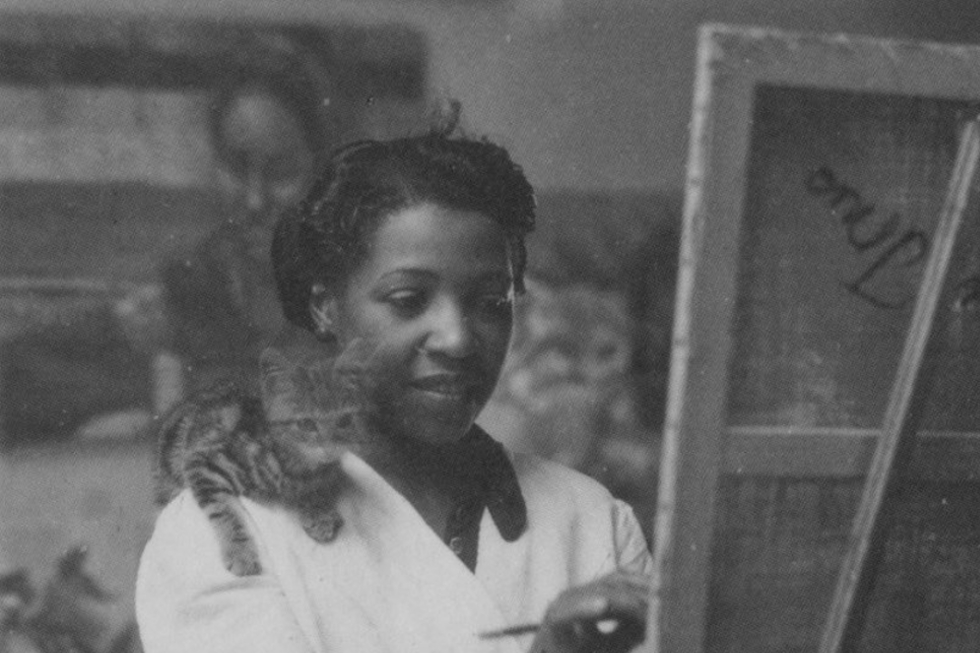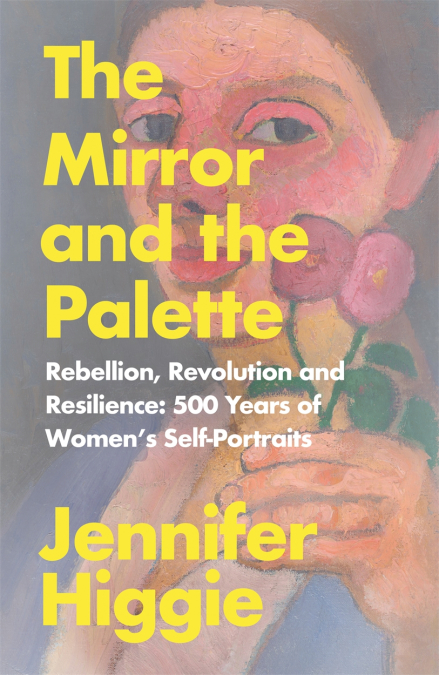The Mirror and The Palette: Rebellion, Revolution and Resilience – Jennifer Higgie

In this extract from Jennifer Higgie’s forthcoming new book, The Mirror and The Palette, the author addresses centuries of sexism by omission in the art world…
“Anyone who wanted could cite plentiful examples of exceptional women in the world today: it’s simply a matter of looking for them.”
Christine de Pizan, The Book of the City of Ladies, 1405
She looks at herself, again and again. She’s in London or Paris or Helsinki or Sydney. She’s in a village by the sea or a hamlet in the mountains, in a room, a studio, a flat, a place, however small, she can call her own. She’s a mother, she’s childless, she’s straight, she’s queer, in a relationship or relationships, happily celibate or filled with a longing for something or someone just out of reach. She’s finally found some time alone, perhaps even a moment of peace, even though there’s a clamour in the streets: modernity is hurtling towards her.
She’s in competition with history, which has always been dismissive of her power. Until very recently, museums wouldn’t buy her work, art historians wouldn’t acknowledge her and commercial galleries would only rarely represent her. She’s a miracle, a marvel, a mystic, a seductress, a changeling, a visionary, a man-hater, a freak; she’s never considered normal. She knows that no two women are the same. She knows that she has always been here, there and everywhere, but for reasons that baffle her, people still refuse to see her. Even now, decades or centuries after she has died, her magnificent achievements remain largely unsung; there are still countless museums, galleries and collectors who do not appreciate her worth, who do not rate her, who are not interested in the many stories she has to tell. She still has so far to travel.
For centuries, she couldn’t enter the academy, even though she and her sisters never stopped pounding on its doors; nor was she allowed to paint anyone naked, not even herself. She couldn’t vote and had little or no governance of her own body. She was all too often defined by the men in her life even if they meant nothing to her. She constantly struggled to support herself financially. She was mocked, excluded, ignored. She was laughed at, told what to wear, what to think, how to move through the world.

Her appearance was always commented upon. If she was beautiful, her morals, her intellectual depth, her innate skills, all were questioned; if, according to the conventions of the day, she was considered plain, she was pitied and patronised. If she didn’t conform, she was assumed to be mad. If she didn’t have children, she was frustrated, frigid, grief-stricken, cold. If she did bear children, more often than not she disappeared for a while or forever; it was a rare husband who understood her need to paint. If she juggled art and motherhood, she was super-human. Time and again she had to work early in the morning or late in the evening, as during the day she had to run a household or earn money. She worked so hard it’s a wonder she didn’t fall asleep on her feet. She scrutinised herself over and over again.
From the moment she was born, she was told who to be. She paints a self-portrait because, as a subject, she is always available. (This is putting it mildly.) She’s been barred from so many other places, so many other bodies. Sometimes, she’s unclear about why and who she’s painting her picture for. (Does anyone really know what a painting is for?) All she knows is that something compels her to look at herself for hours on end, for reasons that have nothing to do with vanity – quite the opposite. What draws her back to her reflection again and again is the raw self-scrutiny that stems from unknowing; from the confusion she’s experienced between the reality of living in her body and the lies that she’s been told about it that have been drummed into her since the moment she arrived on earth.
She looks at herself in order to study what she’s made of, to understand herself anew and, from time to time, to rage against the very thing that confines and defines her. She paints herself to develop her skills, to converse with her contemporaries and with art history. In the act of painting herself she makes clear that she is someone worth looking at, someone worth acknowledging. Her paintings assume shapes that she does not always predict. Against all odds, she discovers what she is capable of.
Jennifer Higgie
The Mirror and The Palette – Rebellion, Revolution and Resilience: 500 Years of Women’s Self-Portraits by Jennifer Higgie will be published in hardback by Weidenfeld & Nicolson on 30th March, £20
Images: Loïs Mailou Jones in her Paris studio, 1938; front cover artwork





